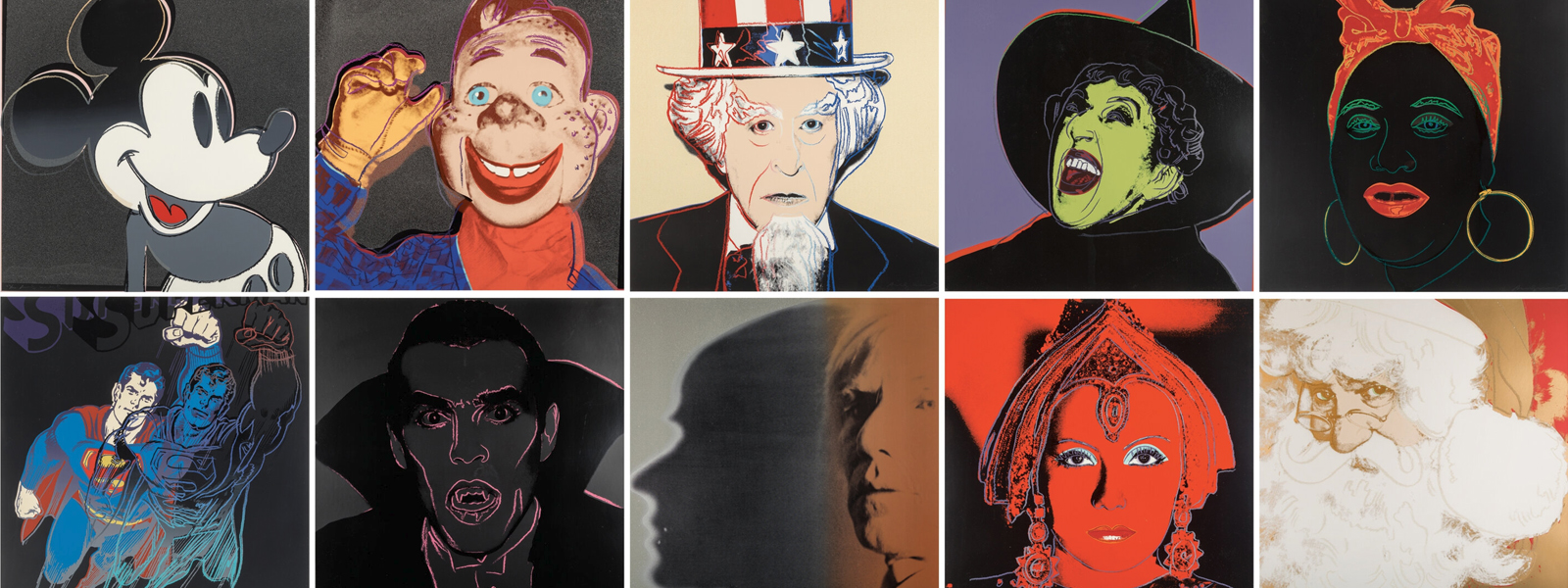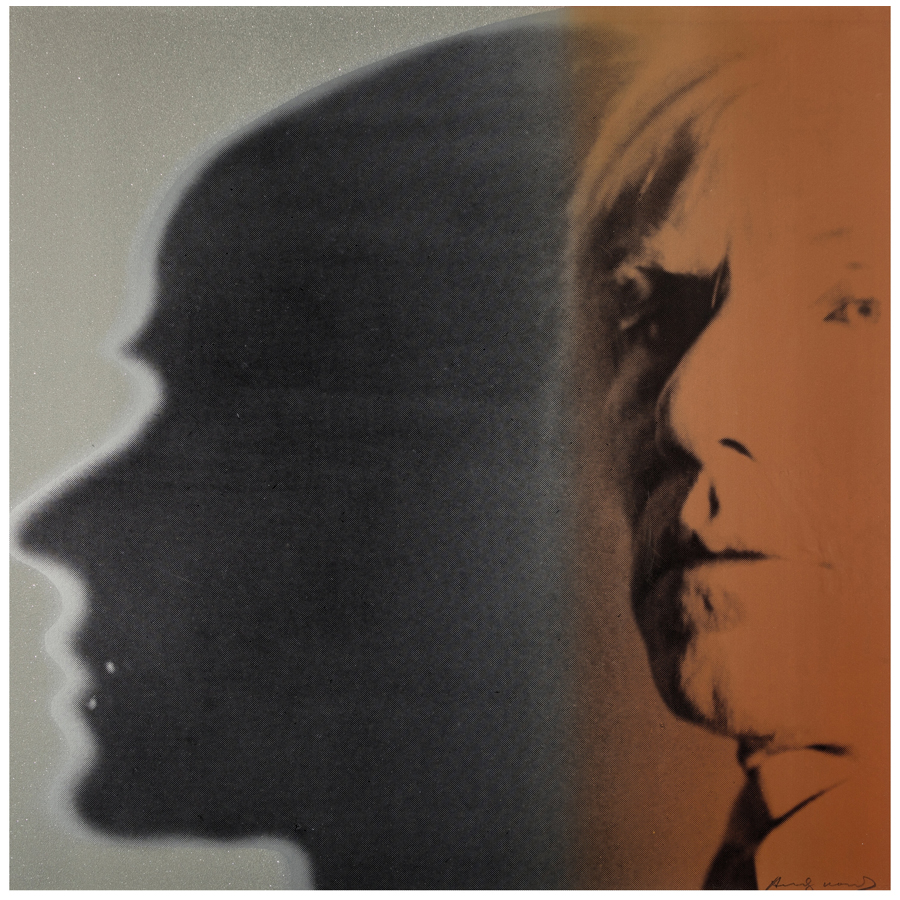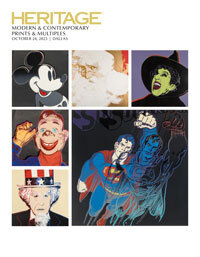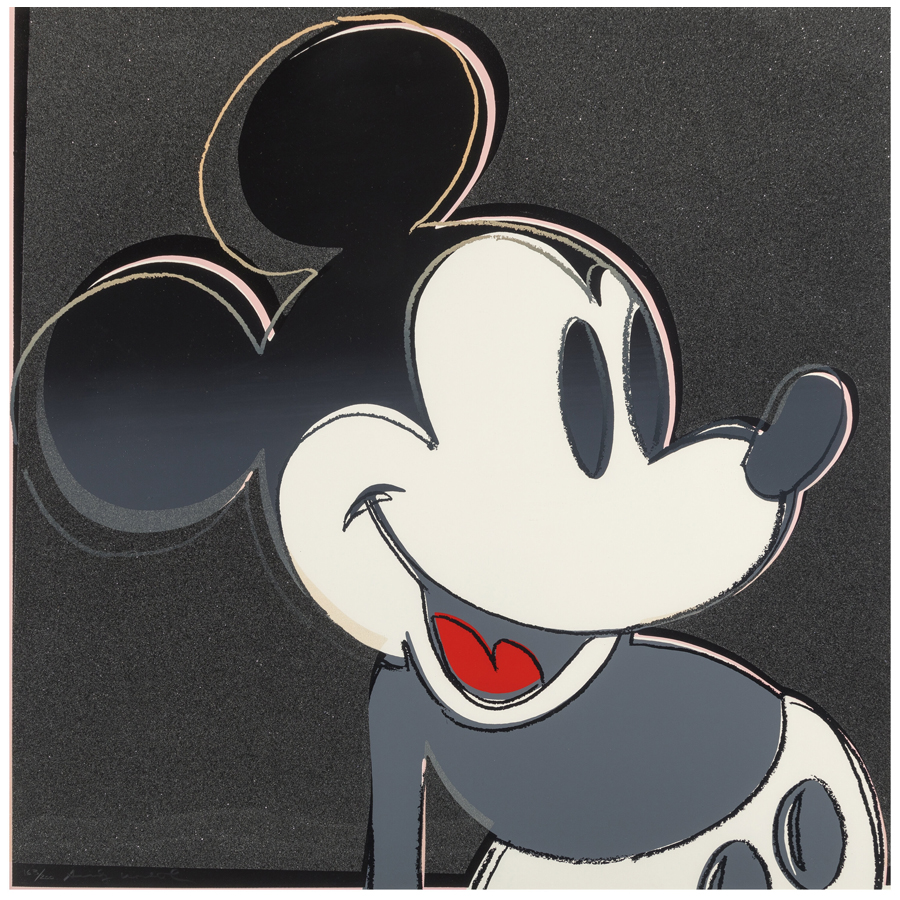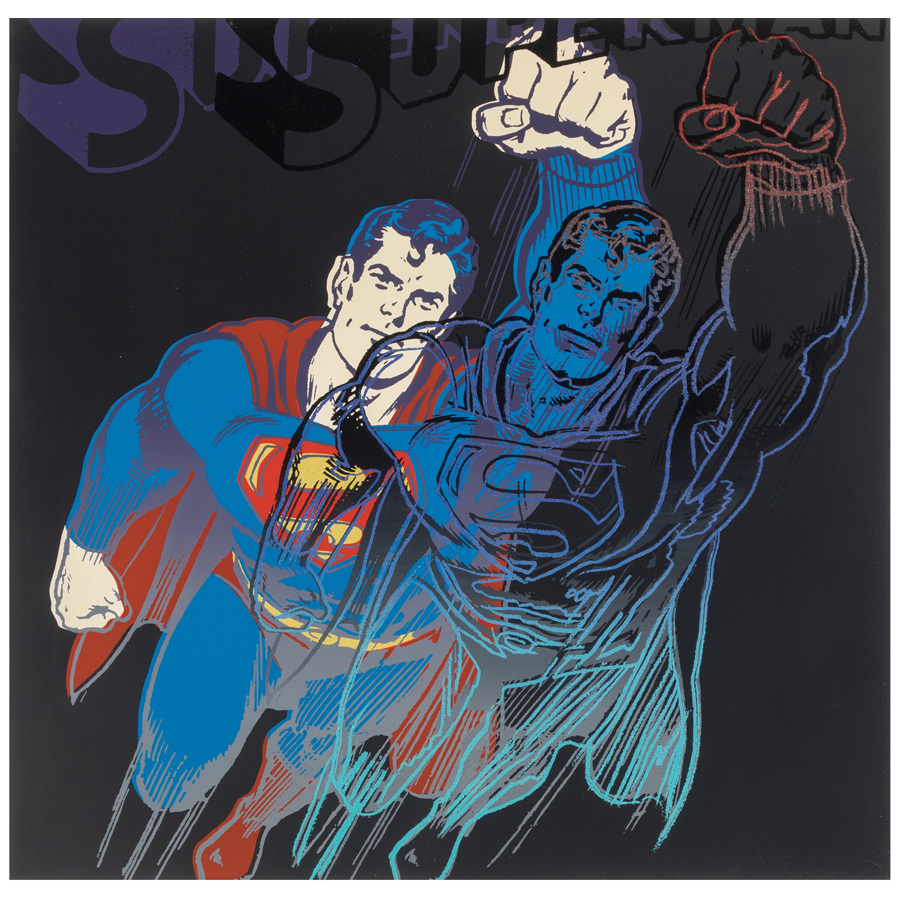PACKED WITH BELOVED FIGURES OF CLASSIC AMERICA, THIS ICONIC 1981 PORTFOLIO MARKED A RETURN TO FINE FORM FOR THE ARTIST. NOW IT HEADS TO AUCTION FOR A GOOD CAUSE.
By Christina Rees
In the early 1980s, Andy Warhol began the process of reassessing his life, career and cultural environment: He watched as the 1970s recession – which had granted his beloved New York City near-endless opportunity for punk and disco-fueled invention – gave way to the national economic boom of the ’80s. Warhol’s love affair with his familiar postwar America was due for some reflection. The times were changing: His young friends Basquiat and Haring would soon be ascendant, and a new kind of art stardom, along with a new kind of art market, would supersede an old guard. Warhol was, in a sense, prepared to revisit so much of what had once been meaningful to him, including the figures and subjects that had inspired him. What had his brand of American pop art wrought, and what did it mean now?
PRINTS & MULTIPLES SIGNATURE® AUCTION 8139
October 24, 2023
Online: HA.com/8139
INQUIRIES
Rebecca Van Norman
214.409.1772
RebeccaV@HA.com
In 1981 Warhol created an iconic portfolio he titled Myths, and while the 10 faces and figures it presents are not on their surface especially moody, the overall feel of the work is infused with the thoughtful and transitional: These iconic figures that symbolize an earlier era are, in his eyes, ready to take on their rightful symbolic historical weight and are thus transformed into legend. Here Warhol revisits faces of classic America and captures them in diamond dust. The portraits – of Superman, Mickey Mouse, Santa Claus and more – speak to each other with a fresh criticality rarely encountered in Warhol’s work since the early 1970s. He includes himself in this portfolio, and that’s a pointed statement: These superstars have arrived at fable status.
Warhol’s shadowed portrait of himself is indeed a significant inclusion in the portfolio: With his forward glance, he bears witness to what is by 1981 a historic America. Mickey, Superman and Howdy Doody emerge not from backgrounds of playful color but rather from a soft and sparkling black space; Uncle Sam’s gaze is less confrontational than we’ve previously seen. The Wicked Witch of the West cackles on cue as Dracula gazes out in a manner of spooky, old-fashioned genre. Santa Claus sports an all-too-human beard. Mata Hari, as embodied by Greta Garbo, is allowed her full spectrum of unmitigated glamour. This is the history of the American psyche, via its entertainment, captured in artful amber. Warhol understands that these figures have transcended their origins to become not just brands but entire allegories.
This is, in other words, a sideways and subtle return to prime form for Warhol – the man who in the 1960s and early ’70s had reflected a knotty and evolving America back on itself with his Death and Disaster series, as well as his unapologetic love for Hollywood and popular entertainment. We remember his images of car crashes and electric chairs, his Elvis and Marilyn, his films of misfits. Warhol’s subsequent commercial success in the later 1970s was marked by his willingness to lean into a commission-led career of celebrity and socialite portraiture, his embrace of ad-based capitalism, and the growing demands of Interview Magazine. And while he’d continue along this route in the 1980s, the Myths portfolio shows us that Warhol never lost sight of America’s pop-cultural foundation and its permanent place in our understanding of ourselves.
On October 24, Heritage presents the full portfolio in its Prints & Multiples Signature® Auction. Finding all 10 of the screenprints together (each editioned 163/200 and signed) and in superb condition is a rare thing and a marvelous opportunity for Warhol aficionados, perhaps especially those who grasp the sociopolitical undertones of the work and of Warhol’s approach to his career at the time of the portfolio’s creation. This offering comes to Heritage from the Norton Children’s Hospital in Louisville, Kentucky, which received it intact as a special gift, in 1986, upon the hospital’s move to its current building. It has been displayed via a gorgeous and dignified installation in Norton’s Scheen Family Conference Center. Sale proceeds benefit Norton’s neonatal intensive care unit, one of the preeminent neonatal treatment centers in the United States.
Given Warhol’s refusal to state the moods and meanings behind his work, it makes sense that this portfolio of iconic characters – so familiar to whole generations of children, their parents and grandparents – means the presence of Myths at Norton, in its serene setting, allowed the work’s flexibility to communicate something that endures well past Warhol’s 1981. He would have adored having the work established as something comforting – a kind of Greatest Hits – in that he himself was comforted by this vision of our history.
 CHRISTINA REES is a staff writer at Intelligent Collector.
CHRISTINA REES is a staff writer at Intelligent Collector.

